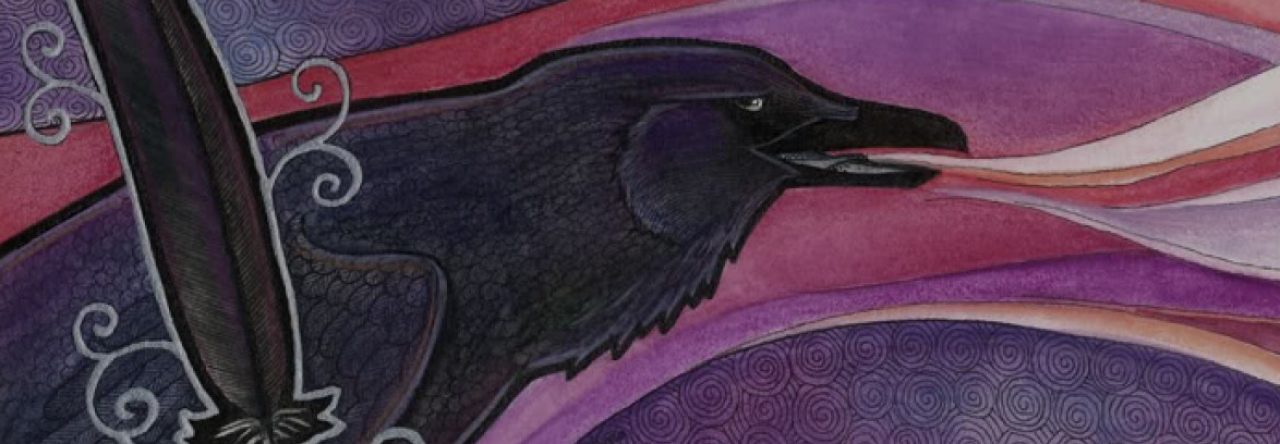
On the [date redacted] of the [year redacted], [names redacted] of the [organisation redacted] discovered a hidden text that documented realities other than our own.
Dark, weird realities.
Within these pages they discovered monuments to a dying alien race, sentient islands caught like fish, a tree that grows pencils, a baby transformed into a hummingbird, and a steampunk Maori whaling crew.
They were afraid, as you should be afraid. They saw life, death and the space between; metamorphosis, terrible choices and bitter regrets.
[Names redacted] looked into the abyss, and what they saw within was nameless and terrible.
This is that book.
Enter if you dare.
This review is presented as part of my commitment to the Australian Women Writers Challenge 2015. I purchased this copy.
Insert Title Here is an unthemed anthology from Australian small press Fablecroft Publishing, said by editor Tehani Wessley to be their darkest offering yet. Of note is the fact that the call for submissions for this anthology actually resulted in Fablecroft publishing two separate anthologies: Insert Title Here and Phantazein.
It is always a different experience reading an unthemed anthology. I find it harder to read more than one story in a row, since there are no connecting threads between stories, and as such, it took me longer than usual to finish this book. This is absolutely no comment on the quality of the book, of course, which is, as to be expected from Fablecroft, extremely high.
I’m not going to discuss every story in this anthology, but I will point out some of my favourites. I’ll note that I loved the darkness of this anthology (you can take the girl out of horror, but you can’t take the horror out of the girl), and all of the stories were worthwhile reading.
The book opens with a story from Jo Anderton, 2B. And holy hell, what an opening this is. I was drawn in immediately by the vivid imagery of this world: a place where things grow in strange ways, tyres growing from trees, pencils which can be planted to grow trees which fruit more pencils. If you’ve never read any of Anderton’s work, this could be a good place to start, as this story highlights her grasp of imagery and strangeness, while still being able to wring deep emotion out of only a handful of words. Dreamlike and haunting, this is one of my favourites in the anthology.
D.K. Mok’s Almost Days is another story which tends towards the dreamlike, this time taking the reader into a place called the Wings. This is definitely a story where you want to go in without being spoiled, but suffice to say that this is an incredible story. Read it, then read it again. Then go and devour everything Mok had written. You’ll thank me.
Her Face Like Lightning by David McDonald takes us deeper into human darkness: of ritual magic and sorcery and grasping for power. I feel very much like this story only begins to skim the surface of a fascinating world, and I hope that McDonald will come back to it at some point in the future (I’d happily read a novel set in this world, hint, hint, David ;)).
Sara Larner’s Living in the Light begins with one of the best first lines I think I have ever read: “My child turned into a hummingbird.”. How could you not read on after that? There is something almost feverish about this story, but in the sheer strangeness of it, there is also heartbreaking emotion. Highly recommended.
Reflections by Tamlyn Dreaver takes us to the terraformed (and failing) moon, where Hana lives with her mothers. This is a gorgeous story, short but filled with sadness, but a sorrow tinged with hope. I’ve found myself thinking of this story often since finishing it, which is always a sign of a good short story.
My last favourite, and the concluding story in the anthology, is Stephanie Burgis’ The Art of Deception. I need to make note here that Burgis is a friend, and someone who I have beta read for, but this does not influence the fact that I would have loved this story, no matter who had written it. Pure epic fantasy, which is extremely hard to make work well in the short form, with a fascinating world and characters, I kind of really hope that Burgis will expand upon this world more at some stage in the future.
Overall, this is an extremely strong collection. The stories are varied, and I suspect that most readers will find at least one or two which speaks to them. Highly recommended.






 Charlotte McConaghy grew up with her nose in a book. Her first novel, Arrival, was published at age seventeen, followed by Descentwhen she was twenty.
Charlotte McConaghy grew up with her nose in a book. Her first novel, Arrival, was published at age seventeen, followed by Descentwhen she was twenty.